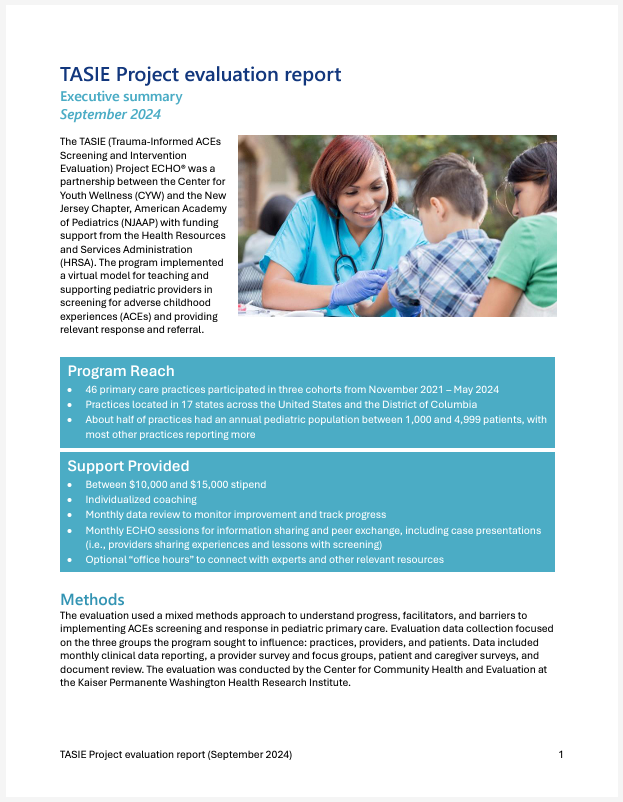The TASIE Project supported 46 practices nationwide to begin ACEs screening and response in their pediatric population. Our previous blog on this topic provides helpful background on the project and the initial outcomes reported to the United States Congress. Since that time we have gone further to interrogate the data and set out some considerations related to ACEs screening in pediatric care settings.

The data shows an overwhelmingly positive response to the project from practices, providers and patients, who all increased their knowledge of the concept of trauma and potentially improved health outcomes as a result. The considerations relate to ways in which organizations can prepare themselves for implementing ACEs screening to ensure that, as in this pilot project, the screening results in an effective experience that provides valuable insight into patient needs, a more holistic and informed care approach and helps improve communication and relationships between patients and providers.
In addition, nearly all respondents found that participating in a cohort of practices working towards common goals and the associated monthly support sessions to be Moderate or Significant contributors to their ACEs screening work. Specifically, participants indicated that the sessions increased providers’ understanding of ACEs screening implementation and provided information immediately applicable to their ACEs screening work. This suggests that a unified implementation of ACEs screening nationwide could be beneficial for efficacy.
The research endorsed our hypothesis that ACEs screening, when done well, is an important and useful care delivery intervention. While more study is needed to determine the longer-term impacts of ACEs screening and its contribution to health outcomes, the shorter-term effects of programs like the TASIE Project are clearly worthwhile.
We hosted a two-part webinar to share the findings as set out in our final report. You can find the recordings on YouTube here:
You can read the full TASIE Project Evaluation Report for a more detailed analysis of the project or visit our webpage about the TASIE project for an overview.